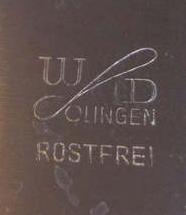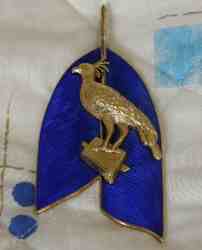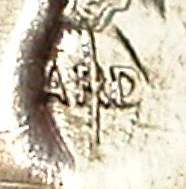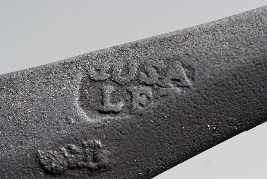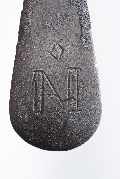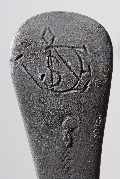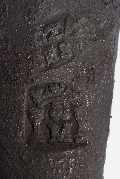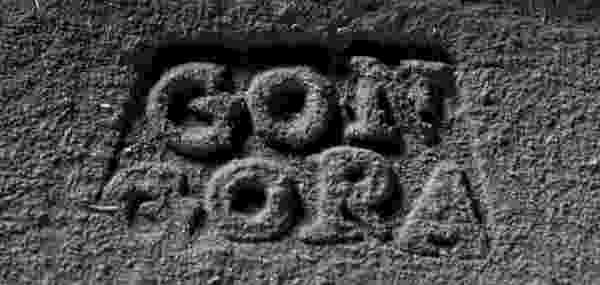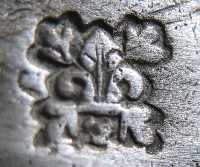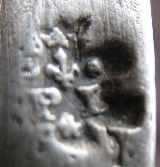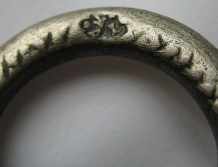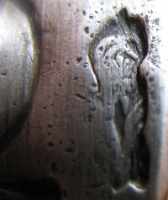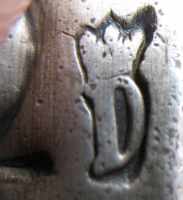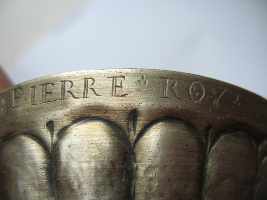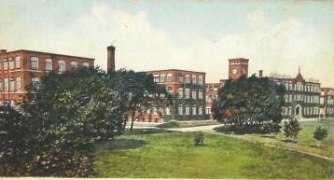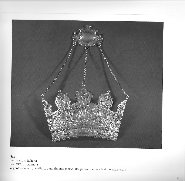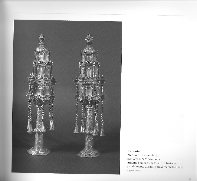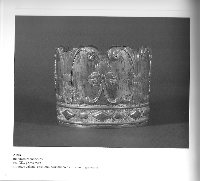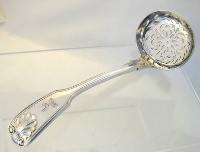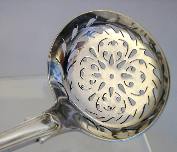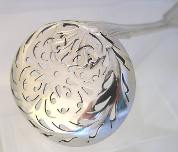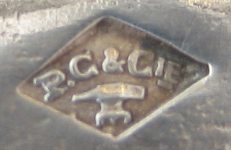
Robert Massart presents:
A Silver Cruet Set - Paris 1892/1911 
.....This beautiful Art Nouveau cruet set consists of a
silver mustard pot and three silver salt cellars. The
set was manufactured in Paris in the workshops of Paul
Canaux & Company, 75 Boulevard Malesherbes, during the
period 1892-1911.
The cylindrical silver mustard pot is made of a 1 mm
rolled silver sheet and is seamed to make the upright
shape. The body is divided in three sections of which
the middle section is adorned with swags and scrolls of
floral motifs intertwined with swans. The upper and
lower sections are adorned with roses and palm foliage.
The mustard pot stands on four small ornamental feet and
the original cobalt blue liner is in pristine condition.
The domed hinged lid has a finial representing a bunch
of grapes. The looped handle ends in a flower and
foliage. The mustard pot stands 90 mm high with a
diameter of 55 mm. The weight of silver is a hefty 94
grams (172 grams including the liner).....
click here 
|
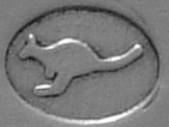
Christine Erratt presents:
Marks on Australian Silver 
.....There is no register of the makers' marks applied
to silverware in Australia as Australia does not have a
hallmarking system.
When the idea came to me in 2002 to document the makers'
marks of contemporary Australian silversmiths, little
did I realise what an exciting project I was embarking
on. Now, eight years later, my book, Marks on Australian
Silver 1950-2005, is published.....
click here 
|
Welcome to new ASCAS members:
Daryl and Delores Ambrose - USA
Yvonne Barr - USA
Nidhi and Naveen Bhatt - England UK
David Center - USA
Candace Dannaker - USA
W.E. (Betty) Harris - Canada
Stephen Moore - England UK
Members' Window # 75
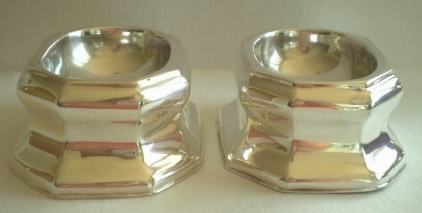
Maria Entrup-Henemann
presents:
London Salts of the 18th Century 
Through my interest for the fascinating material "salt"
I became aware of the marvellous containers which were
created to keep and present this precious substance in
ancient times. I admired the great medieval salts which
had not only a practical use but, above all, a
ceremonial importance, indicating the relative status of
persons by their position at the table in relation to
the large salt. However this use was not very
comfortable, so that, at the end of the 17th century, so
called trencher salts were added. Trenchers were
individual slabs of hard bread or wood that served as
individual plates. Finally the large salts disappeared
and individual salts were placed next to each individual
trencher or between two of them.....
click here 
|
The only information I have is maker's name: Drache
Wilhelm KG, Solingen, Germany.
Giorgio Busetto
Paul Skippen writes:
...I recently acquired this beautiful solid silver gilt
enamelled object. Assayed at Birmingham 1992 by J.W.BENSON. The
top of which has been made into a loop, which makes me think it
was meant to go through a sash or belt. It is approx: 5 inches x
2 inches. I have tried to do my own research in various avenues.
As J. W.BENSON is renowned as a silversmith and clock maker I
thought it may be something to do with clocks. I then
investigated the possibility of an archery award and even
Masonic. I have been completely unsuccessful in all directions.
Can anyone tell me what this is and if it was made for an award
- if so, what?
Paul.
Bruno Bruni writes:
...I found a mark on a silverplate flatware set (F & W LTD),
which I think is not reported on your site. The only
correspondence I found is a similar sterling silver hallmark at
Sheffield Assay Office reported on this site
http://www.silvermakersmarks.co.uk/Makers/Sheffield-F.html :
F & W - 1946 .. 1969 - Flatware
I enclose some photos that I hope will be useful for your
project.
Greetings
Bruno
Replies to questions
José Luis Muñoz writes:
The mark does not belongs to Diego González de la Cueva but
to Nicolás Gonzalez de la Cueva 1701 - 1713.
I send the
pdf with an article written about a Spanish silver tray by
Cristina Esteras Martín, professor of Hispano/American art
history. You can contact her at: http://www.anba.org.ar/anba/index.php?option=com_content&task=view&id=42&Itemid=9
José Luis
Christophe Ginter writes:
Regarding Jean Christophe MALGUY's request, there may be
no doubt,
(1) "D" crowned for warranty mark, Paris 1720. Charge and
discharge marks are correctly described (for Paris 1717-1722),
(2) silversmith is Pierre LANDELLE, with initials PL, a very
famous maker registered in 1705, his activity is recorded until
(at least) 1751.
I guess that the corresponding item is a wine taster.
Christophe
Michael Carter writes:
With regard to questions from Jean-Christophe Malguy in
the July newsletter:
Photo #1: appears to be a discharge mark used for "vaisselle
montée” in Paris from Oct 1, 1717 to Feb 14, 1722;
Photos #2-3: if the second letter is an I instead of an L, the
maker’s mark may be that of Pierre Jarrin, received as a master
silversmith in Paris Feb 18, 1712;
Photo #4: appears to be a charge mark used in Paris from Oct 1,
1717 to Feb 14, 1722;
Photo #5: appears to be the warranty mark (crowned D) used in
Paris from July 29, 1720 to Aug 4, 1721.
I assume that all of these marks were found on the same item,
apparently a wine taster.
Other members may also answer his questions and possibly come up
with different answers on Photos #2-3.
Best regards,
Michael
In this column we present a page
obtained from makers' brochures, books, auction catalogs,
advertising or whatever other printed paper, related to silver,
that may be of interest for ASCAS members.
The images will be published at a "low resolution" level and for
private and personal use only
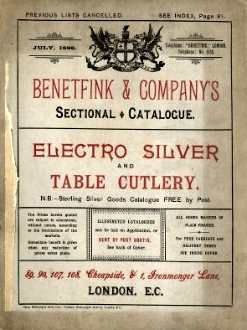
|
This month we present a page of the 1890 catalog of
BENETFINK & COMPANY'S
SECTIONAL CATALOGUE
ELECTRO SILVER
AND
TABLE CUTLERY
Benetfink is a retailer’s mark. Benetfink & Co was
an optical company based at 107-108 Cheapside, London.
The firm was active using the names Ben & Jones
(1845-1851), Benetfink & Co (1852-1861), Benetfink & Fox
and, again, Benetfink & Company in the 1890s
|
"A WORD per MONTH"

|
FIGURAL TRADE MARKS
ON BRITISH SILVER PLATE
The
trademark or trade mark is a distinctive sign or
indicator used by an individual, business organization,
or other legal entity to signify that the products or
services, to consumers with which the trademark appears,
originate from a unique source, and to distinguish its
products or services from those of other entities....
more
|
"A SILVERSMITH per MONTH"
|
|
GORHAM CORPORATION
The origins of Gorham are
in 1831 when the firm of Jabez Gorham was joined by
Henry L. Webster in the Gorham & Webster.
In its history the firm assumed these names: Gorham &
Webster (1831-1837), Gorham Webster & Price (1837.1841),
J. Gorham & Son (1841-1850), Gorham & Thurber
(1850-1852), Gorham & Company (1852-1865), Gorham Mfg.
Company (1865-1961), Gorham Corp. (from 1961).
The company moved into a new headquarters in Providence,
RI in 1890 as employment surpassed 500, and in 1905 they
opened a retail outlet on Fifth Avenue in New York
City.....
more
|
"A BOOK ON MY SHELF"
In this column we present books, new
or ancient, dealing with silver in all its aspects (history,
marks, oddities...). This isn't a "book review" but only a fair
presentation of some useful "tools" that anyone may have in the
shelf of his bookcase.
ASCAS members are invited to contribute to this column
(click to enlarge images)
The "book on my shelf" of this month presents:
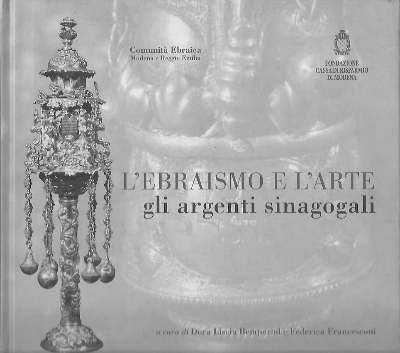
|
L'EBRAISMO E L'ARTE
gli argenti sinagogali
The catalogue of the
Modena Synagogue Exhibition (September 7-14, 2003)
of Silver Artifacts of the Synagogues of the
Modena Ghetto (17th-19th Centuries).
by
Dora Liscia Bemporad and Federica Francesconi
Comunità Ebraica di Modena e Reggio Emilia, 2003
(text in Italian and in English)
The exhibition presented silver objects
traditionally used in Jewish families.
Objects whose purpose was to enrich and to
adorn the synagogue fittings represented a
devotional and dedicatory gift while
different was the case for objects created
for family use which, due to their private
and domestic function, were handed down from
father to son and followed the destiny of
their owners....
|
"A CREST per MONTH"
In this column we present images and
descriptions of Crests and Mottoes of British, Irish and
Scottish families as engraved on silver items.
WYMAN, WEYMAN, WYEMAN, WAYMAN
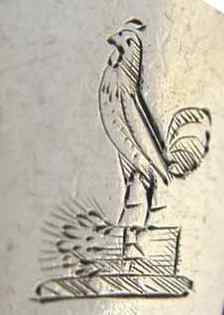
|
A fighting cock complete
with spurs stood on a sheaf of wheat. The crest is on a Victorian
silver plate sugar sifter spoon marked with the maker's
mark of Gilbert, a firm established in Birmingham in the
late Georgian period, however this piece dates to c1860.

|
Closing our August 2010 edition of ASCAS
Newsletter I hope you have appreciated its content.
Your comments, suggestions and advice will be of great help.
My thanks to Bruno Bruni,
Michael Carter, Jayne Dye, Maria Entrup-Henemann, Christine
Erratt, Christophe Ginter, Michelle Graham, Robert Massart,
Carolyn Meacham, José Luis Muñoz, Paul Skippen, for their
invaluable contributions.
Giorgio Busetto
Secretary
DISCLAIMER AND PRIVACY POLICY
ASCAS is a community of people having a common
interest in antique silver.
It is a non-profit association without commercial links.
Membership is open to whomever has a true interest in
this subject matter.
ASCAS has no real property and no fees are requested nor
accepted from members.
ASCAS keeps in touch with its members only through
periodical newsletters, e-mails and web-site updating
and ignores and is not responsible for any other
activity pursued by its members.
Likewise, ASCAS is not responsible for opinions,
evaluation and images displayed, and in any form
published or supplied for publication, by its members
who, in any case, maintain the property of their works
and assure the respect of national and international
legislation about Intellectual Property.
ASCAS does not have the full addresses of its members
(only town, country and e-mail address are requested for
membership).
ASCAS handles and protects with care its members' e-mail
addresses, will not disclose the addresses to third
parties, will use this information only to reply to
requests received from members and for communications
strictly related to its activity.
These rules are expressly accepted by submitting the
membership request.
|
|
 newsletter
# 75 August 2010
newsletter
# 75 August 2010







